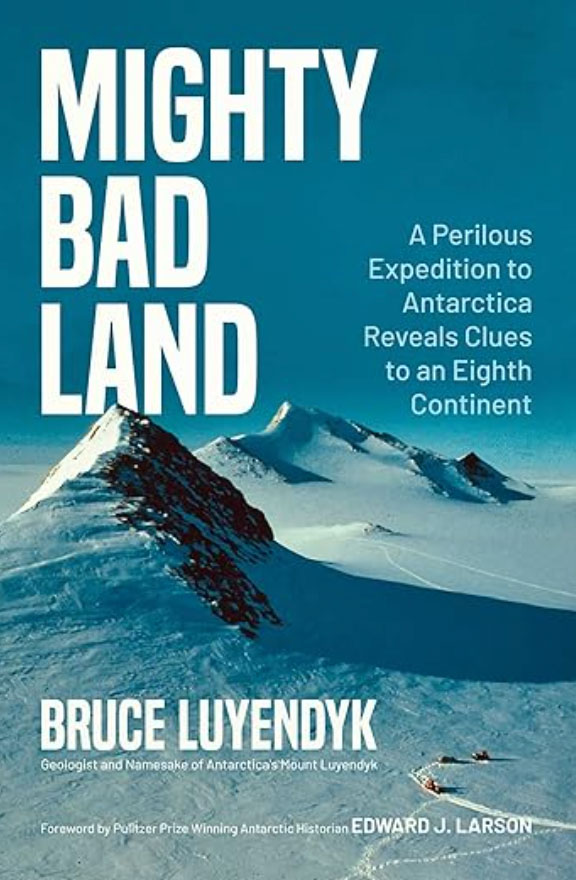
Distinguished Professor Emeritus from the University of California, Santa Barbara, Bruce Luyendyk, was elected a Fellow of the Geological Society of America, the American Geophysical Union, and the American Association for the Advancement of Science. On his first expedition to West Antarctica in 1989, Luyendyk and his geology team found evidence that a large submarine plateau, a fragment from the Gondwana breakup, comprises a sunken continent beneath New Zealand. This eighth continent was named Zealandia by Luyendyk.
In 2016, the US Board on Geographic Names honored the author by naming a summit in Antarctica Mount Luyendyk. Luyendyk is a graduate of San Diego State University and the University of California, San Diego. His prior research in marine geophysics included exploration of deep-sea black smokers, i.e., hydrothermal vents, using the deep submersible ALVIN off western Mexico. For this, he and colleagues shared the Newcomb Cleveland Prize of the American Association for the Advancement of Science. In 1989–1990, when Bruce Luyendyk led the first of what would become six scientific polar expeditions, his hero was explorer Ernest Shackleton who, in 1916, led his twenty-seven stranded men from Antarctica to safety. Although nearly eighty years after the time of Shackleton, the author’s team lacks the life-saving GPS and satellite communication of modern exploration.
Antarctic veterans warn Luyendyk of dangers in Marie Byrd Land, or “Mighty Bad Land.” The author tells how his six-member team survived whiteout blizzards, endless cold, a fall into a crevasse, and breakdowns in cooperation. Nevertheless, the exploration efforts of Luyendyk and his team of geologists reveal important discoveries about the origin of one hundred-million-year-old mountains, including a Gondwana origin for a submarine plateau underlying New Zealand and the southwest Pacific.
Learn more about Mighty Bad Land